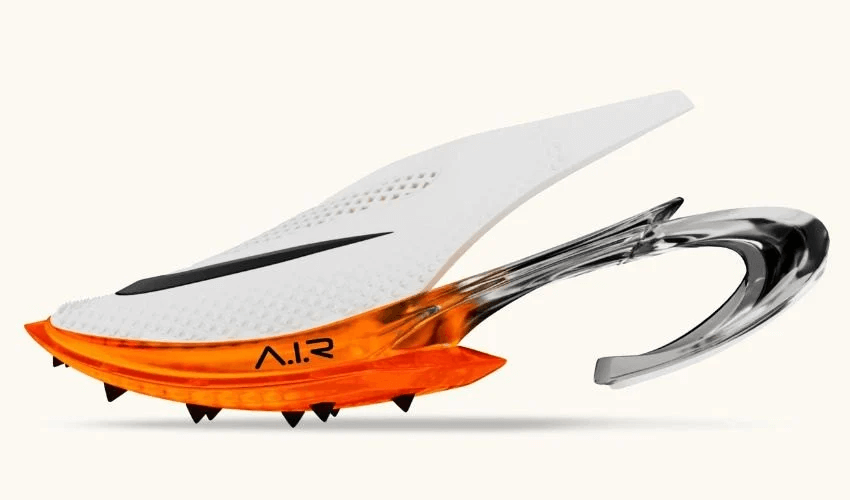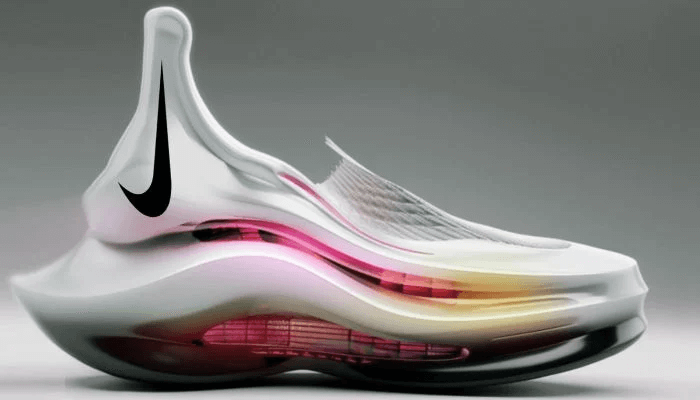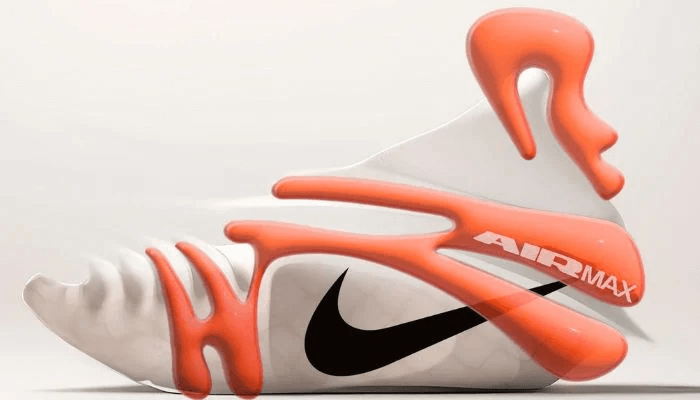
Consider a shoe that reflects people's diverse personalities. Whether you're a book lover, a connoisseur of luxury watches or a fan of fantasy films, what would such a shoe entail? Nike pursues this vision with his project Nike AIR, aiming to integrate the unique styles and athletic needs of 13 sponsored top athletes into individual shoe designs. Achieving this goal relies on the design teams of Nike, the contribution of athletes and modern technological tools. Using algorithms, artificial intelligence and 3D printing, Nike developed prototypes for each athlete's signature shoe. These innovative creations were unveiled at the Nike On Air event on April 11 at the Palais Brongniart in Paris.
Building on the iconic Nike Air, a symbol of continuous innovation within the brand, Nike AIR takes the concept even further. The renowned sports goods manufacturer boldly claims to create its most daring shoe designs yet. By fusing AI technology, 3D printing, design and craftsmanship, the brand combines cutting-edge methods with established practices to encapsulate not only the current zeitgeist, but also the spirit of the future. AIR not only represents the Air-based prototypes, but also serves as an acronym for Athletes Imagined Revolution, highlighting the brand's commitment to pushing the boundaries and redefining athletic footwear.

The basketball player's shoe A'ja Wilson
In fact, Nike AIR is perhaps the brand's most intensive collaboration with its athletes, who have been involved in every step of the design process to create a reflection of their personality in the form of a shoe. The 13 prototypes are collaborative creations between Nike and Olympic and Paralympic athletes from running, tennis, basketball and soccer.
Create 13 unique creations with AI and 3D printing
In the initial phase of the process Nike conducted extensive interviews with its athletes to delve into their vision of the perfect shoe. Athletes provided feedback on design preferences, customization options, and shared insights about their personalities, playing or running styles, and key life experiences. These wide-ranging responses were aggregated by AI into a global idea, and this AI created hundreds of different images for each athlete. The designers of Nike used these algorithm-generated images as a source of inspiration for their first designs and presented them to athletes.
Afterwards, each athlete and sports personality offered their individual insights. For example, marathoner Eliud Kipchoge highlighted potential performance issues with the initial model, which necessitated optimization fixes. Similarly, other athletes provided feedback to improve the aesthetics, functionality and personal expression of the initial prototypes. For example, tennis player Zheng Qinwen's snake-shaped shoe not only symbolizes the year of the dragon according to the Chinese lunar calendar, but also reflects her Chinese heritage.
The feedback provided by the athletes proved invaluable to the design team at Nike, highlighting potential flaws in some of the AI-generated designs that may not have stood up to the rigors of the sport. Creating the final prototypes for the 13 athletes involved a combination of 3D sketching, computer design, hand drawings and 3D printing. This hybrid approach significantly accelerated the production process of Nike. While traditional methods could take weeks to months, final prototypes were completed within a few hours to a few days at most. The concept creation center of Nike, equipped with fast 3D printers, played a key role in this accelerated timeline, along with the integration of artificial intelligence.

Tennis player Zheng Qinwen's shoe pays tribute to her cultural heritage.
"AI is exponentially increasing our creative process," says Roger Chen, vice president of Nike, NXT Digital Product Creation. " It took us months to create these starting points. Now we can create them in seconds. We liken AI to a sharper, smarter pencil. The designer is still in control. It's what you do with the pencil that creates the magic. We gave these generative programs entire worlds to reflect back to us, and they did. But that doesn't happen without the in-depth listening sessions our teams have had with our athletes.”
S AIR Nike wants to provide athletes with high-performance equipment that reflects their personality and supports them in their quest for the best performance or best time. At the same time, the brand is looking further into the future and is not limiting its approach to fully customized shoes to the 2024 Olympic Games in Paris. The 13 prototypes are an inspiration for the brand to explore what the shoes of the future could look like, integrating performance and individuality.
"For these prototypes to be successful, they need to evoke emotions ,” explained John Hoke, Chief Innovation Officer of Nike. " They should evoke a sense of awe for what lies just beyond the horizon, optimism for the future. What I really hope this project will evoke is a sense of limitless potential. Nike Air is almost 50 years of young technology. We are barely on the cusp of harnessing Air's potential, its full expression. And these shoe prototypes show we're far from done."

Concept of Kenyan runner Faith Kipyegon and some of the AI results.
0 Comments